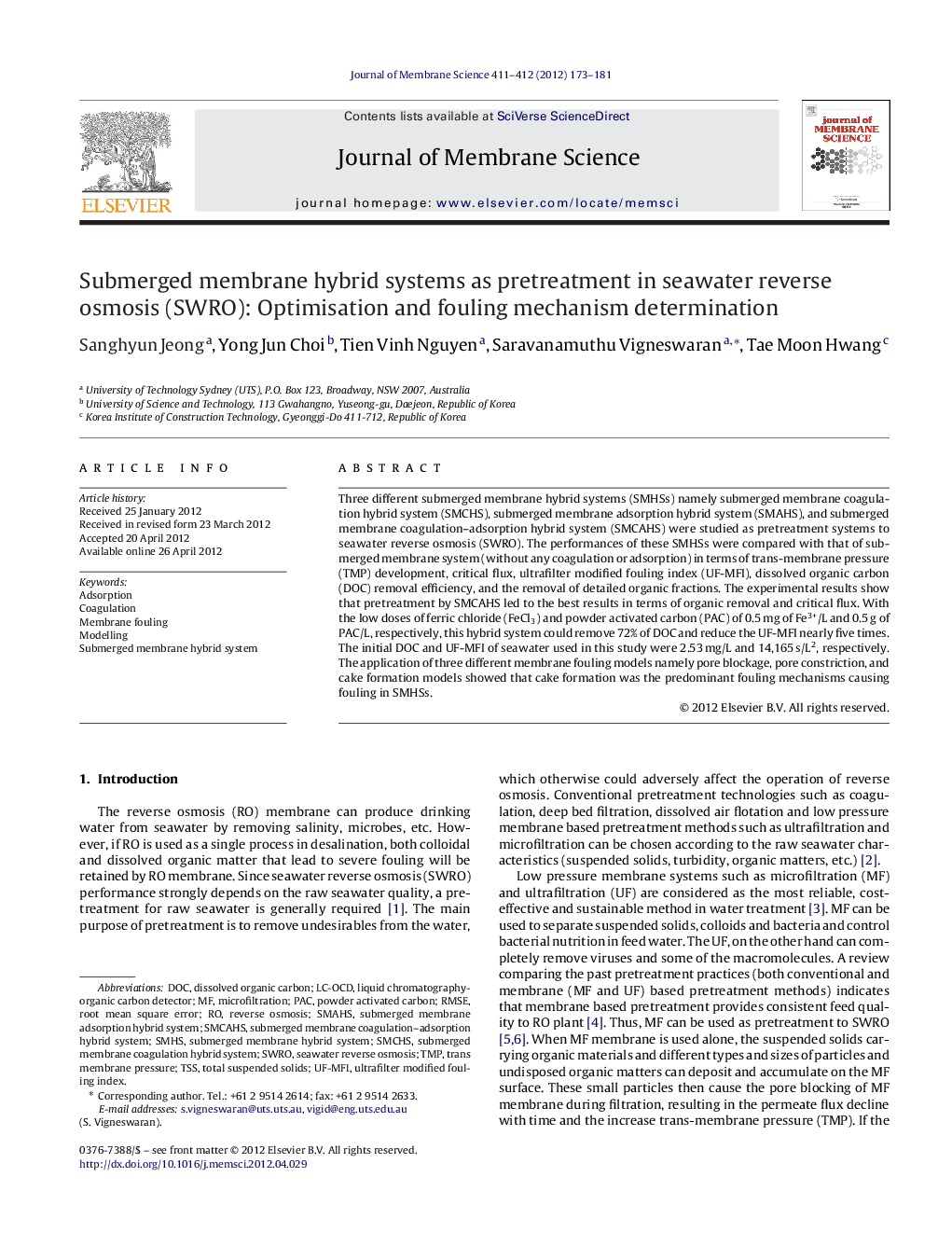| کد مقاله | کد نشریه | سال انتشار | مقاله انگلیسی | نسخه تمام متن |
|---|---|---|---|---|
| 634869 | 1456080 | 2012 | 9 صفحه PDF | دانلود رایگان |

Three different submerged membrane hybrid systems (SMHSs) namely submerged membrane coagulation hybrid system (SMCHS), submerged membrane adsorption hybrid system (SMAHS), and submerged membrane coagulation–adsorption hybrid system (SMCAHS) were studied as pretreatment systems to seawater reverse osmosis (SWRO). The performances of these SMHSs were compared with that of submerged membrane system (without any coagulation or adsorption) in terms of trans-membrane pressure (TMP) development, critical flux, ultrafilter modified fouling index (UF-MFI), dissolved organic carbon (DOC) removal efficiency, and the removal of detailed organic fractions. The experimental results show that pretreatment by SMCAHS led to the best results in terms of organic removal and critical flux. With the low doses of ferric chloride (FeCl3) and powder activated carbon (PAC) of 0.5 mg of Fe3+/L and 0.5 g of PAC/L, respectively, this hybrid system could remove 72% of DOC and reduce the UF-MFI nearly five times. The initial DOC and UF-MFI of seawater used in this study were 2.53 mg/L and 14,165 s/L2, respectively. The application of three different membrane fouling models namely pore blockage, pore constriction, and cake formation models showed that cake formation was the predominant fouling mechanisms causing fouling in SMHSs.
► Submerged membrane hybrid system (SMHS) with FeCl3 flocculation and/or PAC adsorption.
► Low doses of ferric 0.5 mg/L, PAC 0.5 g/L removed 72% of DOC, reduced 5 times of UF-MFI.
► Both hydrophobic and hydrophilic compounds were significantly removed by hybrid system.
► 3 membrane fouling models (pore blockage, pore constriction, cake formation) were used.
► Among the 3 models, cake formation was found to be dominant in SMHS.
Journal: Journal of Membrane Science - Volumes 411–412, 1 September 2012, Pages 173–181